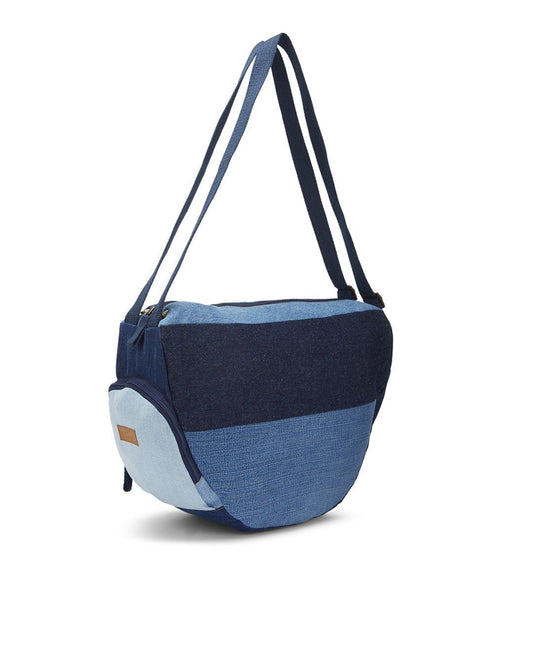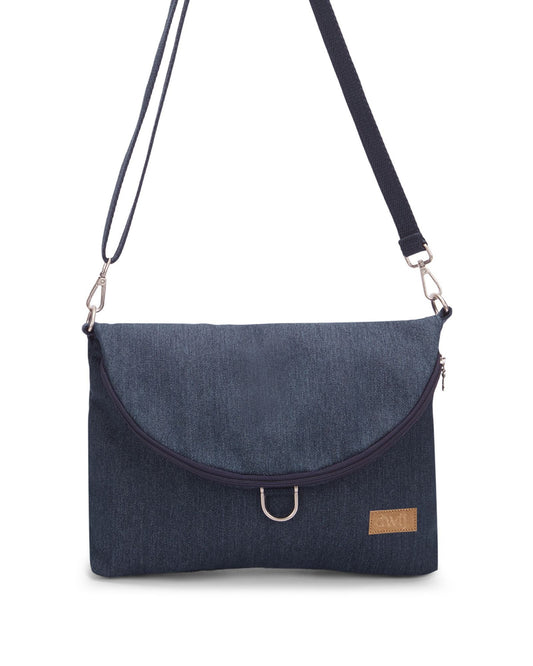IF YOU DEFINITELY WISH TO LEAVE A PART OF YOU BEHIND, LET THAT BE YOUR THOUGHTS & INITIATIVES, RATHER THAN “THE WASTE”.
Making a purchase is the most easiest part in the entire lifecycle of a garment. Most often, we may think about where the garment came from, but not where they would ultimately end up. Easier than purchase is to toss it into the bin when you no longer feel like wearing. As highlighted by dwij in the past (here), there are various options that you can consider before making a purchase such as repair, remake, borrow, swap etc.
Nevertheless, in an event that you make a purchase, it is particularly important to consider the material that you are buying. Consider this, if you throw away your sports jersey today, it continues to remain in landfill even after you die, and it will possibly remain identifiable until your next generation grows old too. Polyester is known to take even upto 200 years to decompose completely.
Now imagine this – If you throw away your old hemp, linen or cotton clothing today, it will completely disappear within the next 6 months. It’s the time frame that a new born baby would start crawling. Bamboo, jute, silk or wool may take a little longer. Nevertheless, they are natural fabrics and would get decomposed soon too.
Take a look at below to get a perspective. The next time you go and buy a synthetic garment, we are sure you would consider the above facts!

Now, what can you do?
We bring to you a list of preferred fabrics the next time you go for a purchase. Our list of preferred fabrics is based on various factors that are important to make a fabric environmentally friendly. For natural fibres, one of the most important aspect is low water consumption for cultivation. Amongst the natural fibres, hemp and linen top the list, while cotton follows next. Although water is used for silk production, it is relatively much lesser than water used for cultivation of natural fabrics. Hemp and flax (i.e. linen) are particularly known to grow with very less soil nutrients, thus preventing the usage of excessive fertilizers, while maintaining soil quality. All the fabrics listed are bio-degradable within a reasonable timeframe. When your old hemp, linen or cotton garment is dumped today, it will completely disappear within the next 6 months. It’s the timeframe that a new born baby would start crawling. Bamboo, jute, silk or wool may take a little longer. Nevertheless, they are natural fabrics and would get decomposed soon too.

Cotton is a very water and pesticide intensive crop, and its production is led by China, India and USA. Cotton cultivation and its export from India is widespread and gives livelihood to more than 6Mn people in the country, making it a net water exporter. The need to increase the production per acreage over the years has led to widespread usage of pesticides, the harmful effects of which are not known to the farmer. With a history of adaptation of Btcotton coupled with growing use of pesticide is leading to alarming resistance, which makes the soil ultimately uncultivable. Not to forget irregular rainfall and lack of good irrigation facilities. Despite the harmful effects, the economies of scale and widespread adoption of cotton has made it the most popular and economical natural fabric. Switching to organic cotton is the more sustainable solution, which India is leading the world. Although only 1% of India’s cotton produce is organic, it forms 56% of the world’s organic cotton production.
The organic cotton fabric has the same quality as conventional cotton but not the negative impact on the environment. Organic cotton addresses most of the environmental challenges which conventional cotton production faces. It is grown from non-GMO seeds and without the use of pesticide, insecticide or fertilizer. Unlike conventional cotton, organic farmers use ancestral farming methods, including crop-rotation, mixed farming or no-till farming to preserve the soil. Organic cotton uses up to 71% less water than conventional cotton according to some sources. Several organizations have established certifications for organic cotton such as GOTS, USDA-NOP, Organic Content Standards, IVN and Naturland. Certification is the only proof that a product is truly organic.

Durability is one of the most common qualities that consumers look for in a finished product. Although all the above fabrics have this quality, hemp tops the list. Made from the stalk of ‘Cannabis sativa’ plant, hemp fabric has been in existence for thousands of years. It can be so strong that its original applications were for making ropes, rigging and sails for vessels, fishing nets etc. In textile application too, it can be an excellent choice to make long lasting fabric.
Among its other properties, hemp is not prone to shrinkage or pilling, it can be highly soft, and a breathable fabric too. Hemp in fact softens with each wash and its fibres don’t degrade even after excessive washing. In terms of resource consumption, hemp requires significantly less water as compared to growing cotton, while it grows quickly with minimal soil nutrients. The plant is very good for soil, it can be grown for many years in the same place without exhausting it. This is why hemp is considered to be eco-friendly. Industrial cultivation of hemp is however a challenge in many countries since the laws do not differentiate between hemp and its psychoactive female plant used for making marijuana. China leads the world with 70% of global production.

Centuries ago, linen clothing used to be available only for the elite class, until around 16th century, when flax cultivation (the plant from which linen is made) became widespread and linen became commonly available. Along with hemp, linen is also one of the strongest natural fibres, which makes it long lasting too. And, just like hemp, it starts getting softer too with each wash. Cultivation of flax is cost effective too, since it uses very little water, can grow in poor soil and doesn’t require much inorganic fertilizers or pesticides too. In fact, the whole flax plant has utility value. Flax plants also have a high rate of carbon absorption. For these reasons, we consider linen to be a sustainable material, even when it is not organically grown.
Despite the eco-friendly properties, only approx. 1% of the global fabric production is made from linen, since linen yarn manufacturing is a labor intensive process, leading to cost overheads. The next time you come across a linen garment that you feel is pricy, we are sure that you appreciate that worthiness.

Silk, considered one of the world’s finest fabric shares a lot of its properties with synthetic blend counterparts, however silk is relatively more eco-friendly since it uses lesser resources and doesn’t require pesticides too.
This fabric has however seen a lot of criticism in the past since extraction of silk involves boiling the silkworms cocoons that feed on mulberry leaves. With ahimsa silk, the cocoon is left alone for a few days until the worms mature, pierce the cocoon and fly away as moths. Each cocoon is checked individually prior to boiling. The waiting time reduces the efficiency of the process and reduces the yield too. This process often makes it double as expensive as normal silk.
dwij hopes that the above insights help you make a more conscious decision the next time you go shopping.






